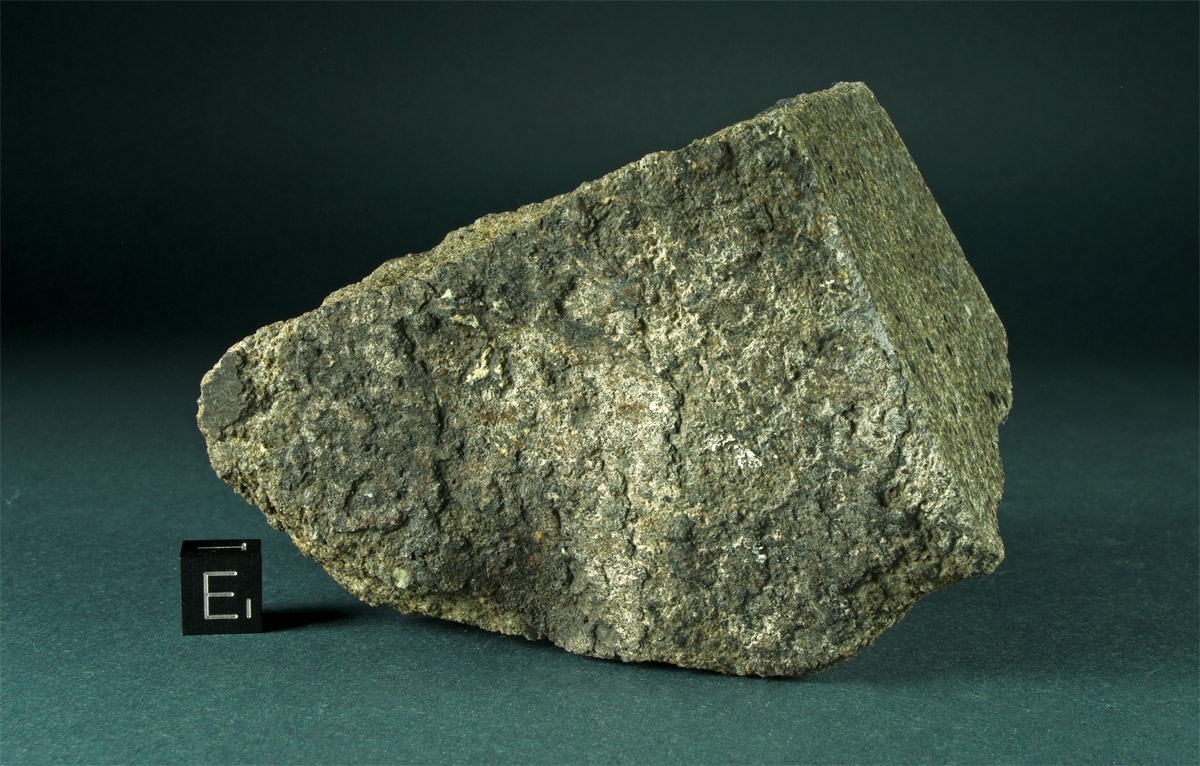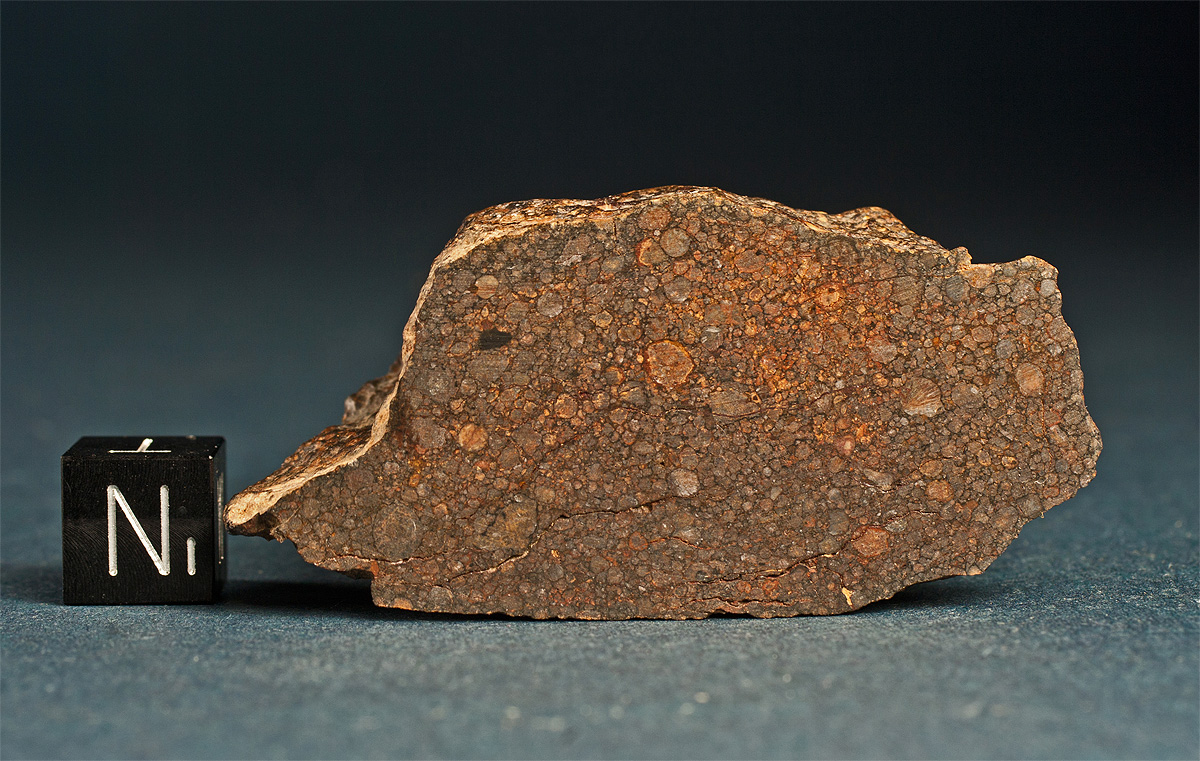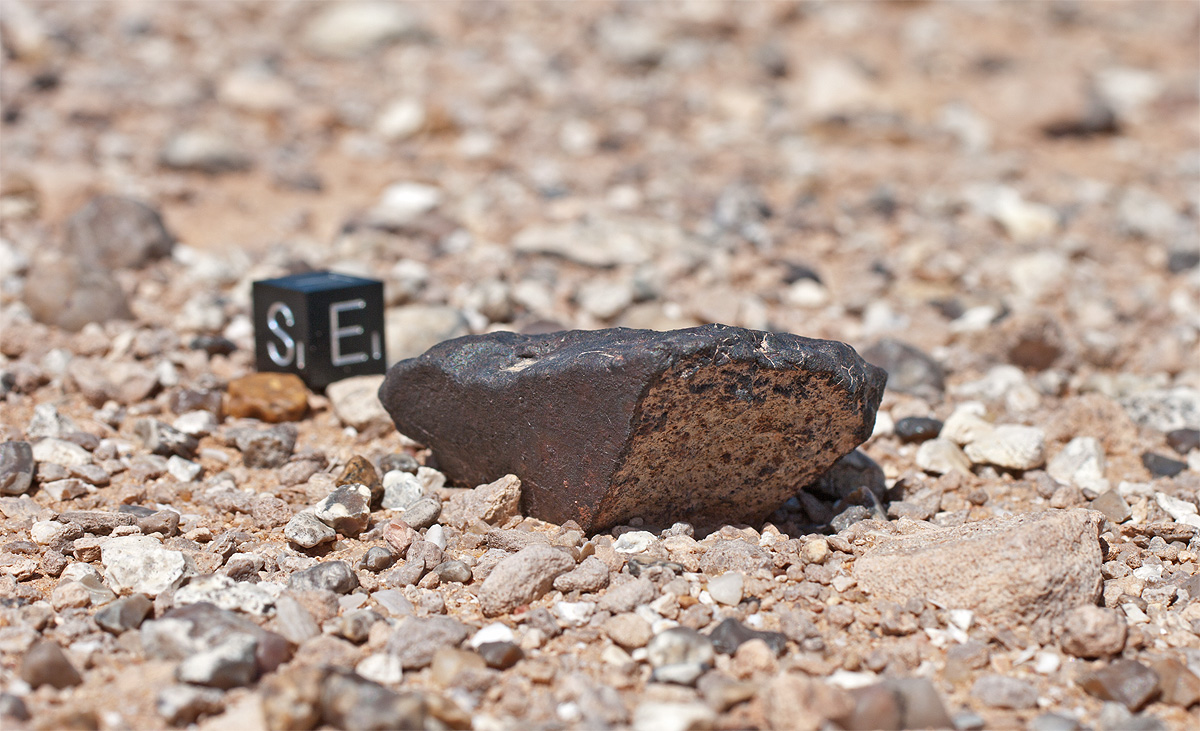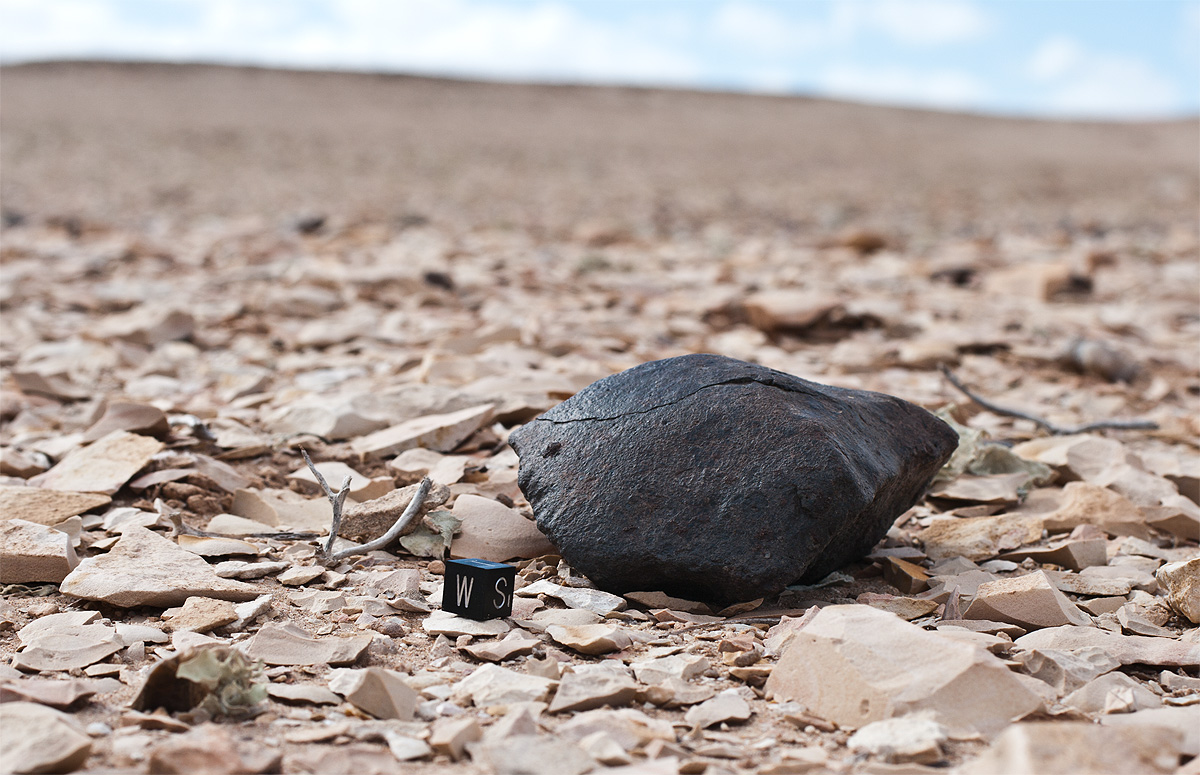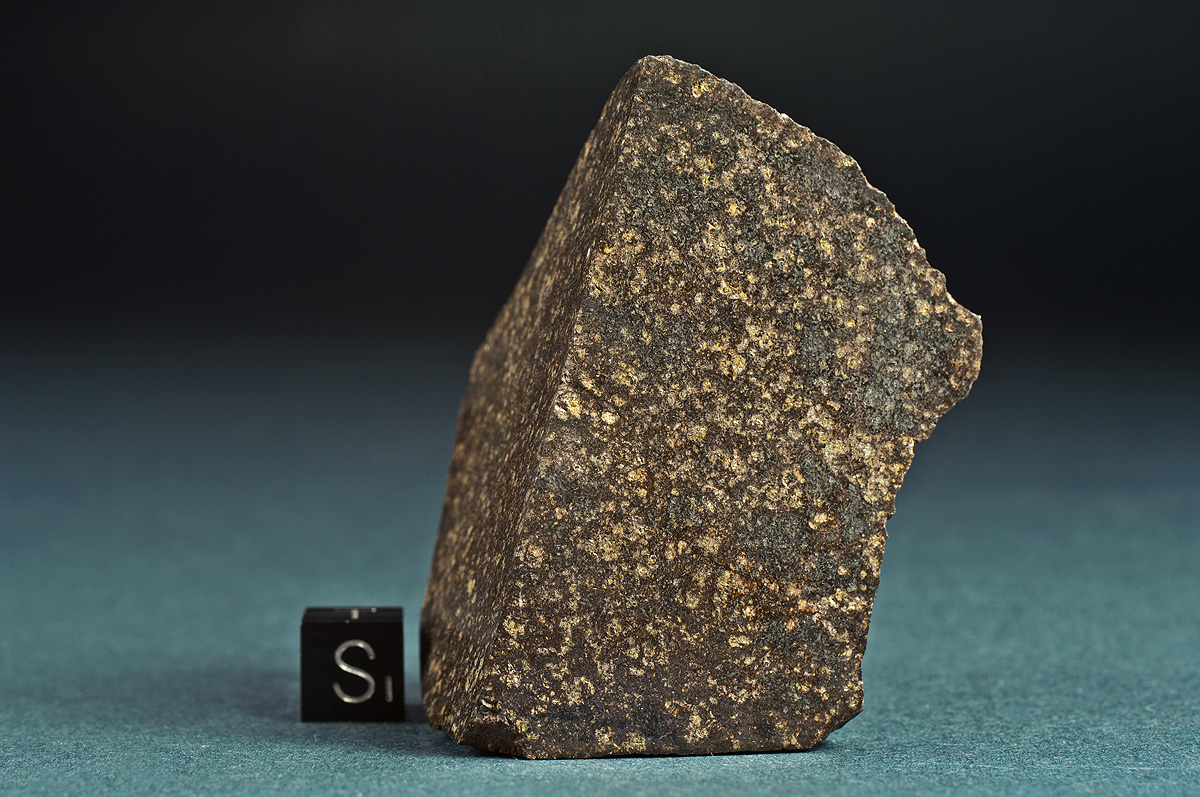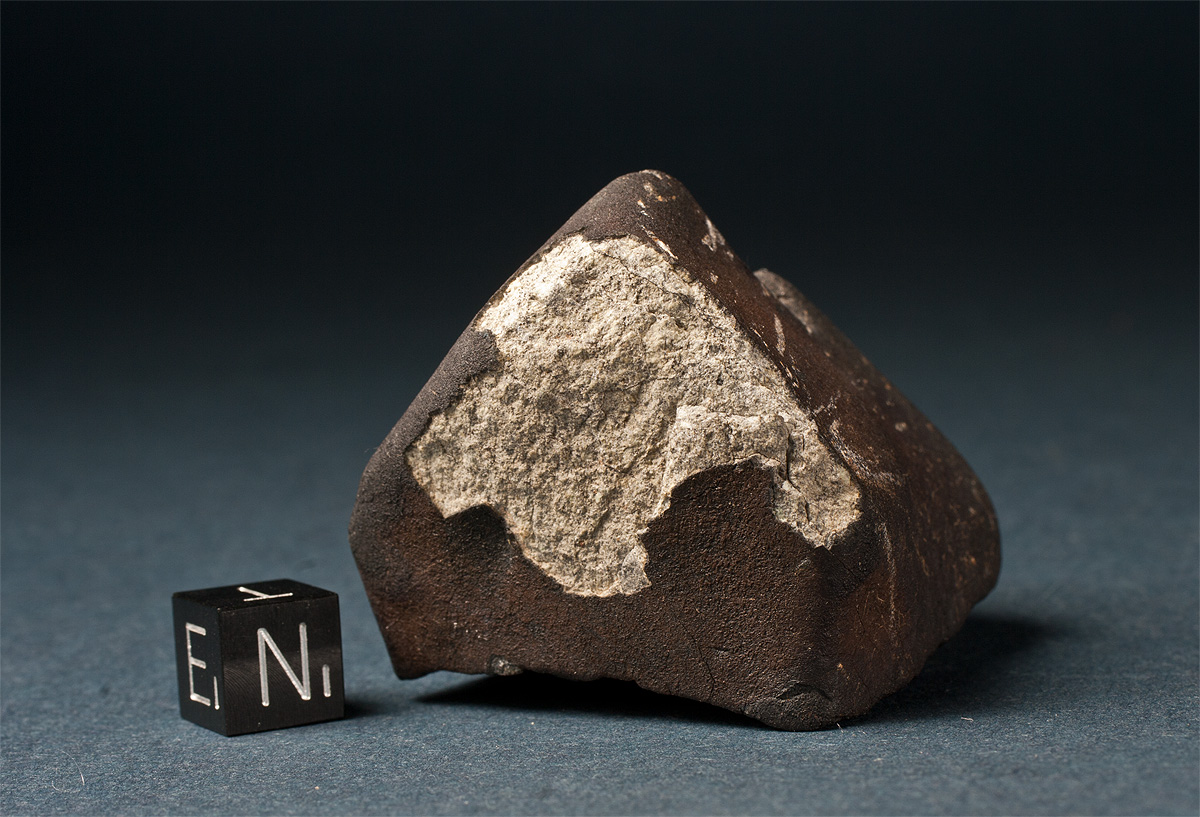Meteorite Recon | Stones
Meteorite search expedtions into continental deserts, meteorite features, collection specimens and photography
Meteorites, Meteorite, meteoritic, iron, meteorites, photos, pictures, in situ, strewnfield, strewn field, impact, fall, finds, Meteorite searching
146
archive,paged,tax-portfolio_category,term-stones,term-146,paged-6,eltd-core-1.0.1,ajax_fade,page_not_loaded,,borderland-ver-1.8, vertical_menu_with_scroll,smooth_scroll,paspartu_enabled,paspartu_on_top_fixed,paspartu_on_bottom_fixed,transparent_content,grid_1300,wpb-js-composer js-comp-ver-6.0.3,vc_responsive,elementor-default,elementor-kit-6471

Stone, chondrite, L6, W0
Near Bruderheim, Alberta, Canada
Fall: March 4, 1960; 08h 06m U T.
TKW: 303 kg
Individual: 107.70 g
Elongated angular mass in the shape of a hammerhead. Apart from a small chip this meteorite is fully coated with a thin black velvet like fusion crust. Bruderheim entered the atmosphere as a detonating bolide creating a flash which was visible for 200 miles and followed by a series of loud detonations heard over an area of 2000 square miles. The fireball travelled on an azimuth of N. 100°, slope 40°, in the direction of the earth’s revolutionary path. The bolide had an initial velocity of 8 – 10 miles per second. The meteorite shower produced an elliptic strewnfield 3.5 miles long and 2.25 miles wide with its long axis N. 80° W. This particular mass was found by Walter Holowaty relatively late in the search campaign. It was one of the last meteorites of the Bruderheim fall recovered during the initial search after the fall and it received the University of Alberta’s collection number B-177 (of 188 initially recovered). University of Alberta trade.
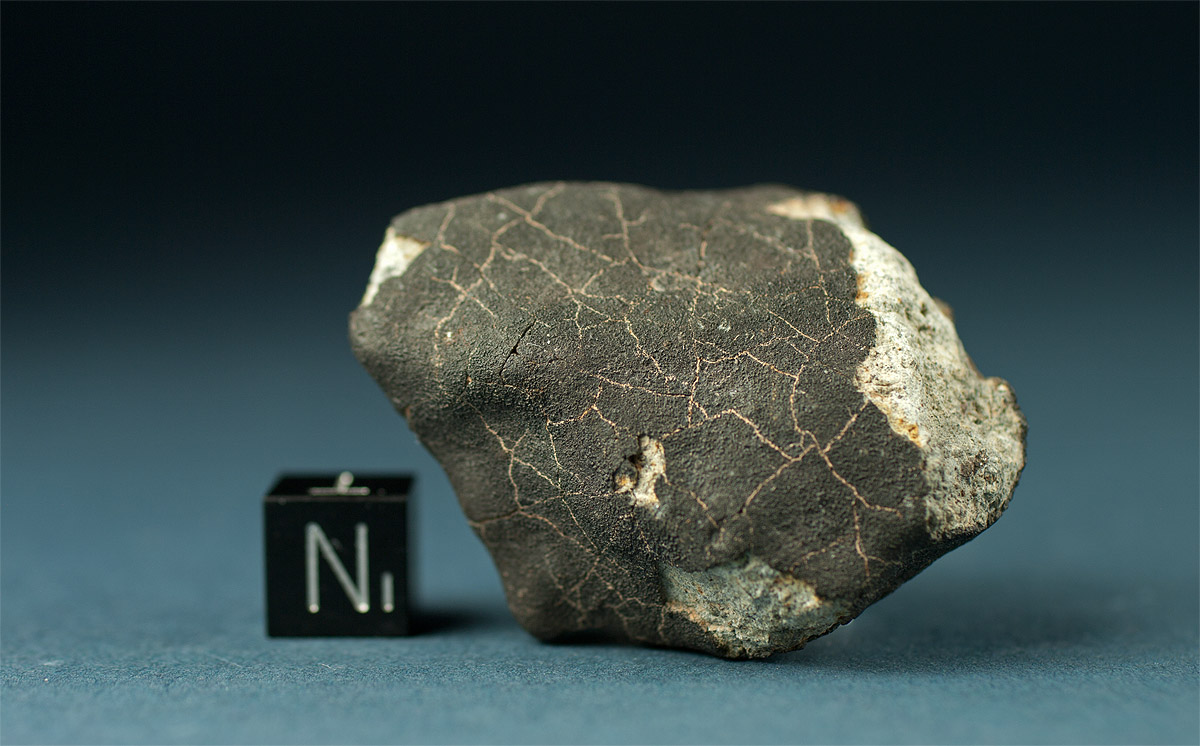
Stone, chondrite, LL6, W0
Jebel Bensour, Moroccan-Algerian border
Fall: February 11, 2002
TKW: >45 kg
Individual 43.30 g
Compact chestnut shaped mass covered with thin primary fusion crust. The meteorite shows a delicate webbing of caliche-filled contraction cracks as effect of weathering. The matrix is of bright ashy color with fine uniform grain texture and shows signs of a very fine brecciation. Given the relatively rare type of the meteorite and the fall of the Kilabo LL6 meteorite only five months later in Nigeria, several researchers speculated that both meteorite falls might have been related and perhaps originated from a common meteorite stream (Cole et al.: Kilabo and Bensour: A comparative study of two recent LL6 falls, 2003). However the cosmic ray exposure ages of Bensour and Kilabo were found different (Ustinova et al. 2008). It has been suggested that a possible candidate for the parent body of all LL’s might be asteroid 3628 Boznemcova (1979 WD), though no spectral data yet exists for this object.
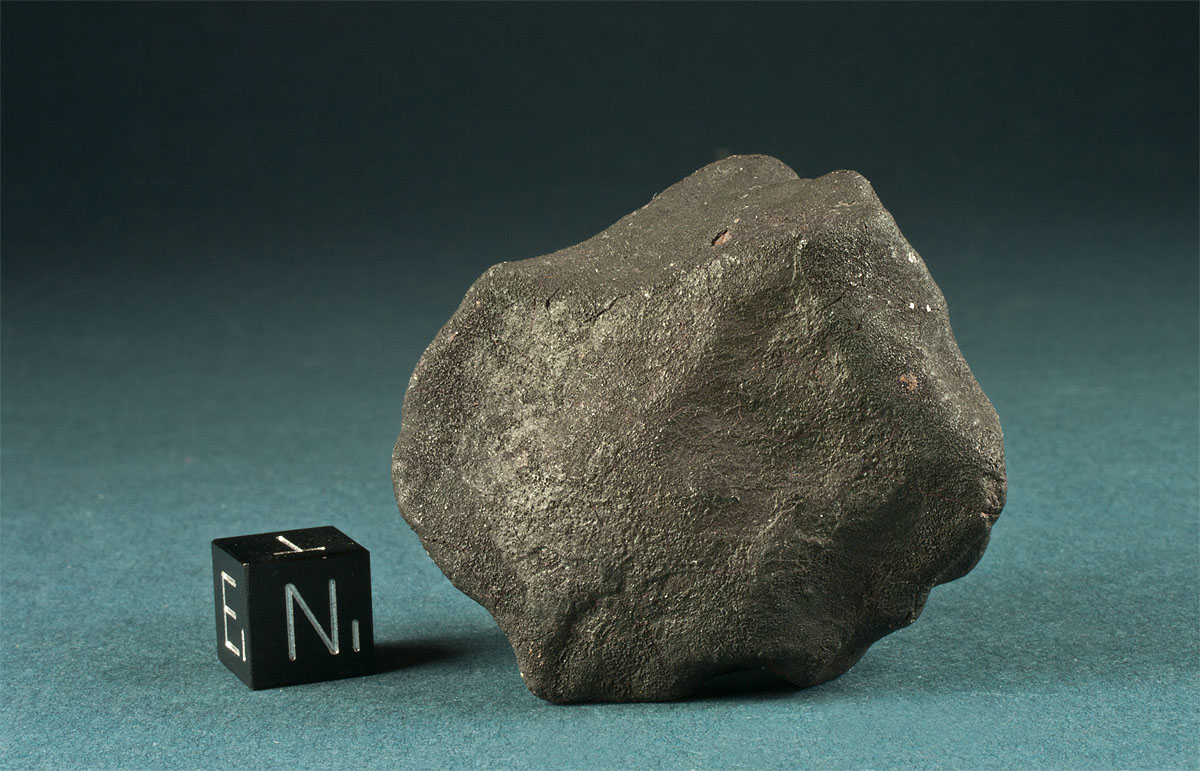
Stone, chondrite, H5, W0
5 miles due east of Wiluna township, Western Australia
Fall: September 2, 1967, 10:46 p.m. local time
TKW: 150 kg
Individual: 78.90 g
Nose shaped mass with few small elongated regmaglypts. The flat base of the meteorite is framed by delicate lipping indicating an oriented flight at the time of solidification. The complete specimen is covered by thick dull primary fusion crust. Wiluna fell after a fireball was seen and sonic crackling and hissing were heard by almost the entire population of Wiluna which at the time of the fall gathered in the town’s outdoor movie playhouse. The meteorite shower consisted of more than 1000 stones and produced a strewnfield of four by two miles five miles east of the Wiluna township. The pictured specimen is a remarkably fresh meteorite recovered during the search organized by the Western Australia Museum Perth shortly after the fall. The specimen bears the painted collection number 12934 101 which indicates the 101st individual collected from the Wiluna meteorite fall.
Stone, chondrite, L5, S1, W0
Agadez District, Republic of Niger
Fall: August 21, 1991, afternoon
TKW: 110 kg
Endcut: 617.00 g
Compact endcut with two cut surfaces, of which one is polished, two broken surfaces and one large surface with original fusion crust. The latter shows light caliche deposits in cracks and cavities. Mount Tazerzait shows an extraordinary lithology. Contrary to most other ordinary chondrites, the material displays very little impact induced shock alteration and a relatively long cosmic exposure age. The most striking difference to common L5 chondrites, is an unusually high porosity of 12.6 percent, with a high amount of vugs in its matrix, often with euhedral to anhedral crystals that have formed in these interstitial pores.
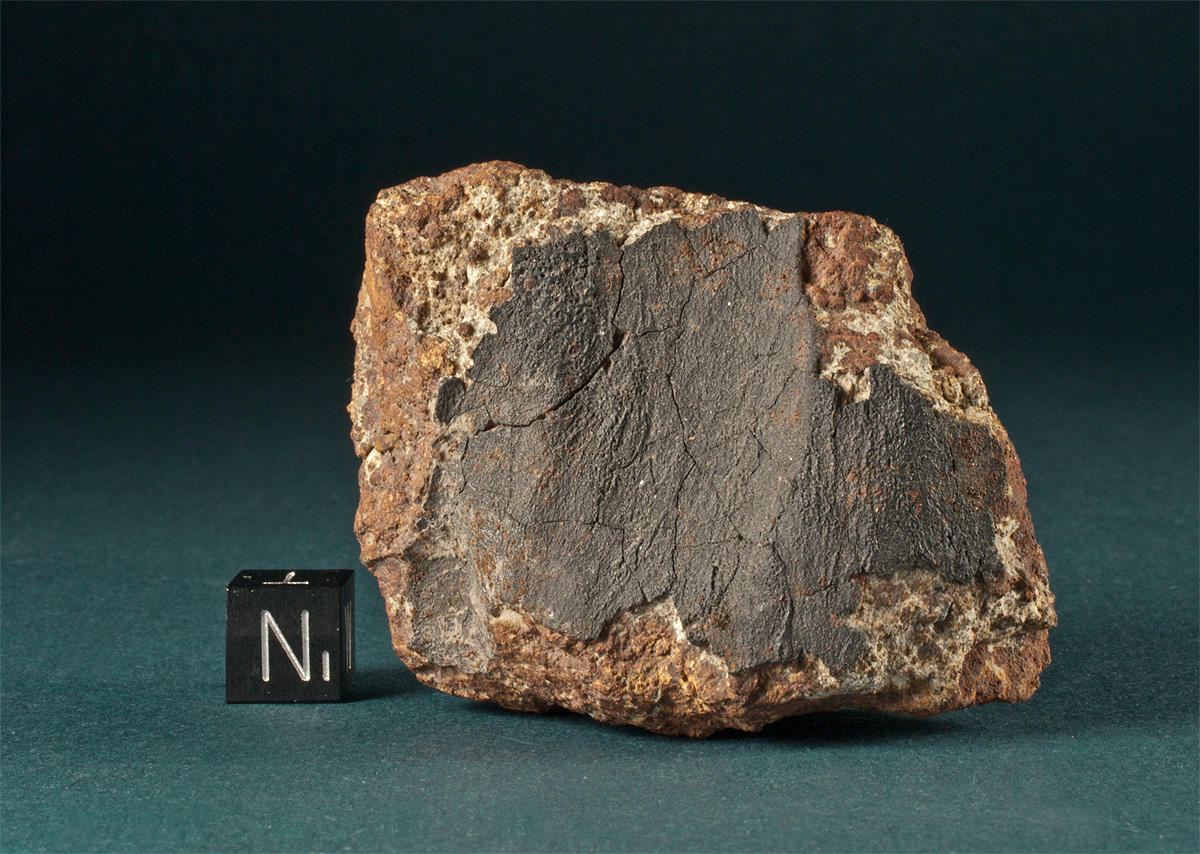
Stone, chondrite, H5, W0
Dashkhowus Velayat, Turkmenistan
Fall: June 20, 1998, 17:25 hrs local time
TKW: ~ 1100 kg
Fragment: 139.0 g
The spectacular fall of the Kunya-Urgench meteorite was observed by hundreds of villagers in the Dashkhowus Velayat. A large daylight bolide brightened the afternoon sky, and a loud whistling followed by a crashing noise was heard. At 17:25 hrs a large single mass impacted 30-50 m from a group of cotton farmers in a field. The force of the impact shaped a crater, six meters wide and 4 meters deep. Many fragments were collected from the ejecta and a large mass of 900 kg was excavated from the bottom of the pit. The president of the Turkmens, Saparmurat Nijasow, ordered the main mass to be transported to the capital Ashkabat, where he offhandedly named the meteorite after himself, “Saparmurat Turkmenbashy” which can be translated as “Sapamurat, head of all Turkmens”. The preatmospheric mass of the meteorite was estimated 1.5 – 2.5 t, the cosmic exposure age was determined ~42 Ma. (L.L.Kashkarov et al. 2000). See also: V.A.Alexeev, etl.al.: THE KUNYA-URGENCH AND SOME OTHER FRESH-FALLEN CHONDRITES: COSMOGENIC RADIONUCLIDES. In: Lunar and Planetary Science XXXII (03/2001), abstract no. 1024. L.L.Kashkarov et al.: TRACK AND NOBLE GAS INVESTIGATION OF NEW KUNYA-URGENCH H5 CHONDRITE. In: Lunar and Planetary Science XXXI (2000), abstract no. 1397.
Stone, chondrite, L3, S3, W3
Lourj Al Ghardeg, Sidi A. Laaroussi, Western Sahara
Find: September 17, 2010
TKW: 64.40 g
Endcut 41.50 g
Unequilibrated chondrite with densely packed chondrules and a comparably low matrix ammount. The cut surface which shows a plentiful variation of chondrules opens a window into the aggregation history of protoplanetary material, as it condensed in the presolar cloud 4.56 billion years ago. The pictured fragment was found mid September 2010 from the back of a camel by S. Larabas in the vicinity of Sidi Ahmed Laaroussi, Western Sahara. An additional search did not turn up any further fragments of this peculiar meteorite.
Stone, chondrite, L6, S3, W1
Tifiquirn, Western Sahara
Find: September 27, 2010
TKW: 50.1 g
Half individual: 35.20 g
Prism-shaped and moderately weathered ordinary chondrite. The meteorite features two surfaces with well preserved primary and one with secondary fusion crust. An additional fractured surface shows only traces of fusion. The NiFe aggregates visible on the broken surface developed small rust halos, but no patina has formed on this surface. After cutting of the sample, a megachondrule measuring 6 mm in diameter became visible. The lower photo shows the meteorite in situ. Bou Kra 003 was actually the 5th find in the new dense concentration area Bou Kra which was discovered by the Meteorite Recon team in 2010. Additional finds from the 2012 search campaign in the Bou Kra DCA are currently pending classification.
Stone, chondrite, L5, S1, W2
Saquia al Hamra, Western Sahara
Find: September 25, 2010
TKW: 606 g
Individual w. cut surface: 491.60 g
Oriented shield-shaped mass with single regmaglypts and remnant flow-lines. The meteorite has developed a distinct desert patina as well as few stress cracks due to terrestrial weathering. The matrix as well is darkened as an effect of chemical weathering. Most iron aggregates show progressed oxidation. The upper photo was taken with the meteorite still in its find Position. Note the difference in color due to different lighting and cackground contrast, compared to the studio photo. Bou Kra 002 was actually the 4th find in the new dense concentration area Bou Kra which was discovered by the Meteorite Recon team in 2010.
Stone, achondrite, ureilite, AUR
Morocco (Western Sahara)
Find: 2010
TKW: 603 g
Endcut: 151 g
NWA 6471 was purchased in Morocco (Western Sahara) in October 2010 and subsequently classified by Dr. A. J. Irving. NWA 6471 is a coarse grained aggregate of olivine (exhibiting characteristic reduced, metal-bearing rims) and orthopyroxene. The sample has two polished cut surfaces at right angles to each other, the reverse side shows the original surface and is coated with well preserved fusion crust.
Stone, chondrite, L chondrite, publication pending
Moroccan-Algerian border
Fall: May 1st, 2010, 03:00 hrs local time
TKW: ~15 kg
Individual: 130.4 g
Fall-fresh chondrite from the meteorite fall which was observed in Southern Morocco and Algeria on May 1st 2010. Following the appearance of a giant bolide, a meteorite shower had descended near the border of the two countries. The stones recovered were subsequently distributed under the names Taousz and Breja. Taousz meteorites show a marvelous sooty fusion rind with an unparalleled contrast to the luminously bright, particularly fine-grained and slightly greenish shimmering matrix. The 130 g collection specimen shows well preserved impact marks.







